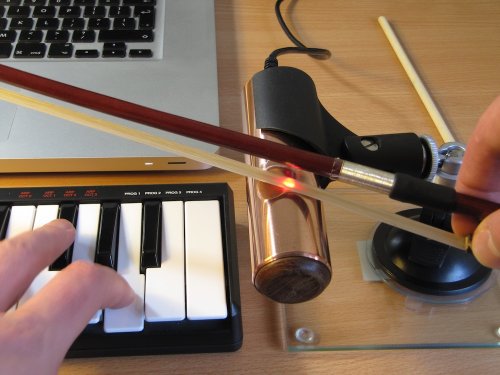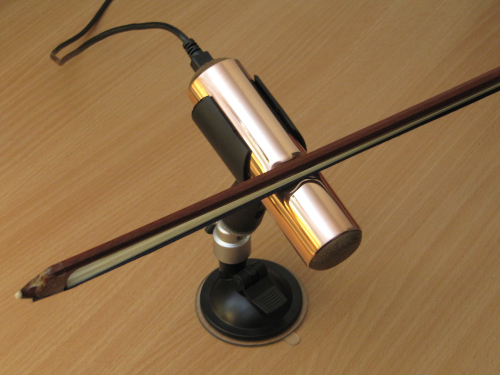Mastering a musical instrument is no easy task. Musicians spend countless hours perfecting their skills, especially on stringed instruments such as the violin. Some people even want to imitate the musical expression brought forth by string instruments in an electronic version, the same way electronic keyboards are being used these days.

Electronic violin called the “O-Bow” users sensors and software to create sounds. (Image via De Montfort University)
Dr. Dylan Menzies and his team of music technology researchers from De Montfort University in England have developed an electronic musical instrument called the O-Bow in response to the need for a wind-controller for string instruments and the desire to automate traditional string instruments.
How it works
The O-Bow comprises sensor electronics and firmware, as well as synthesis software. It uses an optical flow sensor to measure the bow speed and horizontal angle with high resolution. By detecting these characteristics, the instrument can create digital music through a connected computer with the notes created on a separate keyboard.
“The body of the electronic violin is made of a copper cylinder and contains a groove to hold the sensors that is shaped in a way to prevent the bow from sliding off. The O-Bow is easier to play than a traditional violin,” said Menzies.
The O-Bow, on the other hand, requires only the control of velocity. The O-Bow can create a variety of sounds, and rotating the bow can even create a vibrato effect, which new players agree to be challenging.

The shape of the bow saddle has been carefully designed with computer-aided design software. (Image via De Montfort University)
In the future, Dr. Menzies will focus on developing the synthesis for high quality string sample sets and investigate other options for reproducing the casing using aluminum casting and extrusion techniques to simplify production.
The team plans to further develop their prototype so that it can be made available to the public. They presented the device at the International Conference on Tangible, Embedded and Embodied Interaction last month.
Listen to the audio sample of the electronic violin below.
Advertisement





